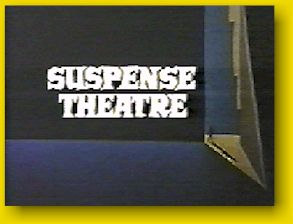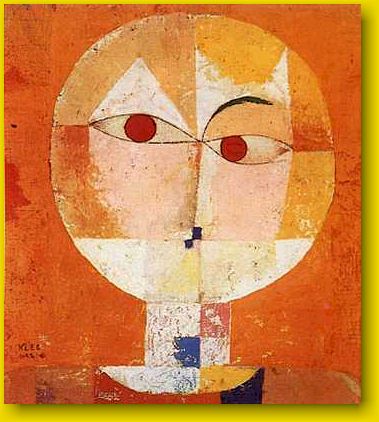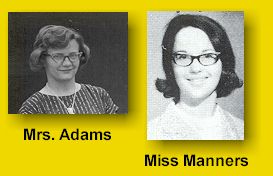
 When I was a kid I'd stay up late to watch the film noirish, expressionistic opening animation to NBC's "Kraft Suspense Theatre." (You get a glimpse of it from the image at left.) It engrossed me. I never cared about the productions themselves, just the opening animation. The show was on from October 1963 to September 1965. I can still remember the musical theme to this day, even though I haven't heard it in over 35 years! Doing some Internet research (where I got the image above), I was interested to learn that it was composed by none other than John Williams.
When I was a kid I'd stay up late to watch the film noirish, expressionistic opening animation to NBC's "Kraft Suspense Theatre." (You get a glimpse of it from the image at left.) It engrossed me. I never cared about the productions themselves, just the opening animation. The show was on from October 1963 to September 1965. I can still remember the musical theme to this day, even though I haven't heard it in over 35 years! Doing some Internet research (where I got the image above), I was interested to learn that it was composed by none other than John Williams.
I recall one conversation with my fourth grade teacher at Monterey Avenue School, Mrs. Adams. She was doing a unit in art with us, from all periods beginning with ancient art and concluding with modern, and had us draw up what we thought would be called modern art. My Daliesque drawing was inspired by the opening sequence of the Kraft Suspense Theatre, and when she asked about it I told her about it. Her response was, "I'm surprised your parents let you stay up that late."
The only other childhood recollection I have of Kraft Foods - besides the blue boxes of macaroni and cheese Dad used to prepare for me as I rode my bike home for lunch - was an ad campaign they had during the Sixties. The camera would pan over a table covered with cheese products and then cut to an image of an old-tyme horse-drawn wagon bumping along a country road, all to a catchy tune called "the Kraft Cheese Wagon." Later on, when I became obsessed with the American Civil War, I learned that this was an adaptation of a 19th century song entitled "Wait for the Wagon," which was adapted for propaganda use by both the North and the South. (And Kraft Foods.)
 I primarily remember Mrs. Adams for introducing me to Paul Klee's "Senecio" (which I believe she simply called "Head of a Man" - shown here). She had a bunch of Great Art mounted on big cards and flipped through them one by one, asking what we students thought of them. The Flemish Great Masters stuff generally left me cold. When she got to Klee's work there was silence in the room. Attempting to provoke involvement she asked, "Comment? (Absolute quiet.) Anyone?" I chimed in with something like, "I like this picture because the eyebrow looks like the man has a question on his mind but the tiny, closed mouth makes it look like he's afraid to ask it. I feel like that in class sometimes. The colors make me think of modern furniture."
I primarily remember Mrs. Adams for introducing me to Paul Klee's "Senecio" (which I believe she simply called "Head of a Man" - shown here). She had a bunch of Great Art mounted on big cards and flipped through them one by one, asking what we students thought of them. The Flemish Great Masters stuff generally left me cold. When she got to Klee's work there was silence in the room. Attempting to provoke involvement she asked, "Comment? (Absolute quiet.) Anyone?" I chimed in with something like, "I like this picture because the eyebrow looks like the man has a question on his mind but the tiny, closed mouth makes it look like he's afraid to ask it. I feel like that in class sometimes. The colors make me think of modern furniture."
I recall a thunderstruck expression on Mrs. Adams' face.
I have seen this work many times since then - most recently in the McDonald's across the street from where I work! Decorated by a franchise-owner of apparently upwardly-mobile corporate aspirations (the booths have Internet ports so busy executives can plug their laptops in for a working lunch - as if they dine in a McDonald's), this place has works by Manet, Klee, Picasso, Klimt and Matisse on the walls. Every now and then I'll have a cheeseburger there, and Klee's man will stare at me and wonder how I'm enjoying it, but refuse to ask.
Mrs. Adams' other great accomplishment was to introduce me to classical music. One day we kids gathered in the Monterey Avenue School's "Multi-purpose Room" (library, stage, cafeteria) to listen to various classical pieces. A lot of it went over my head, but I recall liking an orchestral treatment (possibly from Disney's "Fantasia") of Bach's Toccata and Fugue in D Minor. I made me think of Boris Karloff playing the organ in "Frankenstein 1970." (Note to film producers: If you include a year in your film's title, it will one day be hilariously dated.)
 But it would take three years, another school (Luther Burbank Junior High) and another teacher to really bait the hook with classical music. Oddly enough, this seventh grade teacher, Miss June Manners, looked and acted a lot like Mrs. Adams. Both were young women who wore fussy-looking horn-rimmed glasses (which were in style at the time) and affected brisk mannerisms.
But it would take three years, another school (Luther Burbank Junior High) and another teacher to really bait the hook with classical music. Oddly enough, this seventh grade teacher, Miss June Manners, looked and acted a lot like Mrs. Adams. Both were young women who wore fussy-looking horn-rimmed glasses (which were in style at the time) and affected brisk mannerisms.
I had a rough start with Miss Manners. Music Appreciation was a required class in the seventh grade, and I began it with the attitude that it was a waste of my time. I flunked quizzes and adopted the disruptive, apathetic attitude of the kids around me, and poor Miss Manners would become frustrated and yell, slam her hand on the desktop, etc. At her wits' end, she finally called home and made an appointment with my mom - the first and only time Mom would get involved with a teacher of mine. For whatever reason (oddly enough I don't recall details of the meeting), that did the trick.
I forced myself to become interested and found myself becoming fascinated with the coursework and musical examples she would play for us. (To this day I can still recall being interested in the fact that Claude Debussy started out as an ardent champion of Richard Wagner.) Naturally enough I began to get A's on the quizzes and tests, and Miss Manners expressed amazement at my change of heart.
I recall one musical example she played for us, Debussy's "Prelude to the Afternoon of a Fawn." At the conclusion of the piece I thought it was the prettiest and most amazing thing I had ever heard. A classmate was not as interested, however, and when asked what the music did for him he replied, "It bored me. I started counting the holes in the ceiling tiles." "Idiot," thought I.
I drifted away from classical music until I started rummaging through Dad's record collection, among which were a number of early 1960's Columbia Masterworks Lp's featuring Eugene Ormandy and the Philadelphia Orchestra, and Leonard Bernstein and the New York Philharmonic Orchestra. (Nowadays I collect these, and find them at yard sales. The ones with the more artful covers are in frames on my family room wall.)
 Dad had an eclectic musical taste which I have apparently inherited; he enjoyed Frank Sinatra, Nat King Cole, Julie London and Esquivel. But he also liked Webley Edwards' Hawaiian music, Santana, and, in 1971, he bought the original cast recording of Jesus Christ Superstar (which I loved). He even expressed enthusiasm for the 1974 song "Diamond Dogs" by David Bowie.
Dad had an eclectic musical taste which I have apparently inherited; he enjoyed Frank Sinatra, Nat King Cole, Julie London and Esquivel. But he also liked Webley Edwards' Hawaiian music, Santana, and, in 1971, he bought the original cast recording of Jesus Christ Superstar (which I loved). He even expressed enthusiasm for the 1974 song "Diamond Dogs" by David Bowie.
His taste, while wide, generally ran to what we now faddishly call "lounge music," or "cocktail music" - commercial dance music and exotica from the 50's and early 60's. Esquivel, DeVol - that kind of thing. I was only about three or four when I used to demand that he play Martin Denny's song "Quiet Village" on the hi-fi over and over. (I am three in this photo.) I called it the "chhh-chhh song" because of a scaping percussive sound that occurs all the way through it. That Sears Silvertone in the photo had a feature that mesmerized me: a small circular glass display (the top of a vacuum tube, actually) that gave off a balanced green neon glow when a radio station was properly tuned in. It flickered interestingly during the chhh-chhh's. (Click here for an earlier photo. Click here for the unit shown in the 1956 Sears catalog.)
Fast forward to when I was a teen. By this time Dad had traded in his old monophonic Sears Silvertone Hi-Fi for a 1959 Silvertone Model 3093a console stereo. Dad and I used to argue over whose music was better - his or mine, which at the time was classical and David Bowie, Alice Cooper, Pink Floyd and The Who. In middle age, and excluding classical music, I have readily granted him the victory. These days I like listening to lounge music. And recently, I have turned into a big fan of Julie London.
But back to classical music: in 1972, on a whim, Dad bought me a $3.99 recording of Rimsky-Korsakov's "Le Coq d'Or" ("the Golden Cockerel") Suite at Ralph's, the local supermarket. It was not what one would call a premium recording - it featured Hugo Rignold and the London Philharmonic Orchestra, and the audio quality was pretty bad. The orchestra sounded like it was playing in a cavern. It was manufactured in Burbank by the same people who distributed the "101 Strings" records my father liked. The cover featured a garish rooster crafted out of tin, set on a red mosaic background. (Click here.) Nevertheless intrigued, I listened to it. It was my first experience with an extended classical piece with themes, development, exposition, etc - the other classical music I listened to before then were short, tuneful and easily-accessible. The first time I listened to it I thought it was pretty unremarkable. Then I listened again. And again. And again. Somewhere around the tenth listening I understood the themes and got to really appreciate it, and it became a favorite. It still is, more than thirty years later. And I have come to learn that often, with the classics, you have to work at understanding and liking a piece. Also, sometimes the stuff I like immediately I grow tired of and stop listening to.
I began to find other Rimsky-Korsakov music, liked it, and began listening to other Russian composers - and then German ones, French ones, etc. Before long I was deeply involved with listening to classical music, and Christmas 1973 was dominated by the purchase of many classical records.
MISTER DERRICK
When I was a troubled fifth- and sixth-grader at Monterey Avenue School, I had a friend in the part time school janitor, Mr. Derrick, who was then attending college. He was always encouraging and was a powerful antidote to Miss Johnson, the miserable teacher with whom I never got along. (He once offered me ten dollars for an especially imaginative crayon and paint wash drawing of mine, "the Metal Forest." This did much for my then-fragile sense of confidence; I still have the drawing.) Mr. Derrick used to do maintenance jobs around the school accompanied by a transistor radio, which was always tuned to the local classical station, KFAC. I was impressed by his skill at being able to readily identify pieces being played based on knowledge of the composer's style of composition or orchestration. ("This has one of Prokofiev's characteristic key-changing melodies. It's probably one of his symphonies." Or, "This sounds like Charles Ives - I bet it is." And he'd always be right.) By the time I was a high school senior in 1974, when Mr. Derrick was a teacher at Burbank High, I had also gained this ability. We only spoke a couple of times about classical music - he didn't like Maurice Ravel's music and I did - but the fact that I could even have those conversations represented a real achievement to me.
In 1974, I began to listen to Alice Cooper and David Bowie, mainly because my friend Mike McDaniel was listening to them. Played in a high school music appreciation class - which I easily aced - Alice's "Dead Babies" was a revelation. My changing musical obsessions puzzled my mother, who asked, "How come you're listing to that swing music now?" Both parents were annoyed with my classical music as well. Dad would plead, "Play something I like!" So I made a cassette of his favorite stuff and titled it "Play Something I Like." When he was in the pool sun-bathing I'd switch on the all-weather outdoor speakers I had strategically placed among the trees and popped in that cassette for him. One of the songs on it is Bowie's "Diamond Dogs."
Over the years I have greatly enjoyed the classics, and if I ever come across Mrs. Adams, Miss Manners or Mr. Derrick I'll make sure they know I am grateful to them. I'm grateful to Dad as well - he gets a special thanks!
From TV Tome: Kraft Suspense Theatre was filmed in Hollywood and once a month was preempted to allow a special appearance by Perry Como's Kraft Music Hall. The plots revolved around murder, intrigue, terror, and danger. There was also Kraft Mystery Theatre which ran from June 14, 1961 until September 25, 1963 and this is sometimes confused with the Kraft Suspense Theatre. Rapture at Two Forty presented in April 1965 was the pilot for the later series 'Run For Your Life'
Another little treatise on music: The Carroll County Accident on the Tallahatchie Bridge the Night the Lights Went Out in Georgia.